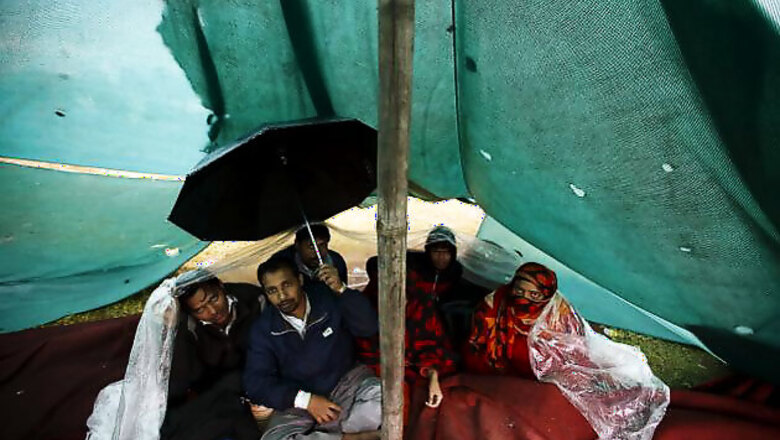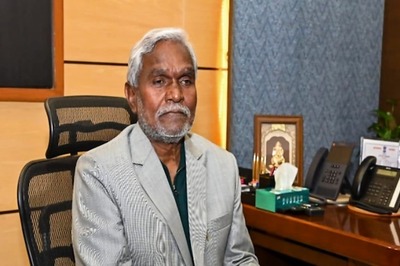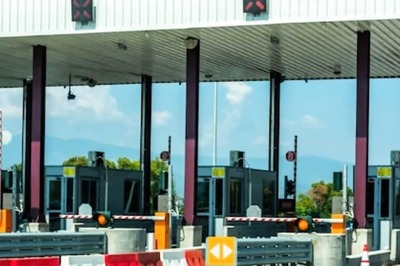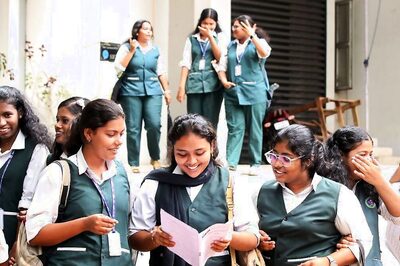
views
Kathmandu: Traveling for hours on packed buses and boulder-strewn roads, thousands of Indians living in Nepal have fled home after last week's devastating earthquake, most with little more than the clothes they were wearing.
Indians account for the largest segment of foreigners in Nepal, amounting to about 600,000 in a country of 28 million, according to some estimates. Officials, though, say the open 1,750 km (1,100 mile) border and a lack of visa requirements means it is impossible to pinpoint the number of Indians living or visiting there at any one time.
India was among the first countries to react to Saturday's killer earthquake in the neighbouring Himalayan nation, sending in search and rescue teams within hours in a powerful diplomatic gesture. But it has also mounted an airlift and mobilised planes and dozens of buses to bring its own citizens home - some tourists, but many more workers who had lived in Nepal for years.
Suresh Sai, a 41-year-old, was among those who fled with his family to Gorakhpur, a city in the northern Indian state of Uttar Pradesh, on Wednesday. He had been working in Nepal for almost two decades.
"Even until last night, when I boarded a bus at the Indian Embassy in Kathmandu to reach here, the ground appeared to be trembling under my feet," he said, still standing in the clothes he was wearing when the 7.8 magnitude quake hit.
Sai worked for a business selling electronic goods until Saturday, but said he left everything behind, including his savings.
"I was often tempted to make an attempt to re-enter our house and at least to pick up what little cash and jewellery we had," he said. "But neither my wife nor I could muster up courage to take the risk: the building shook so badly that it was full of deep cracks and could give way any time."
Like many others, Sai has no prospects of work in India and could have to return to Nepal, but without his still-rattled family.
"I cannot think of falling back anywhere else, but my wife and kids are not able to get over the fear and panic of what they have experienced," he said.
Nepal's government has been largely absent from public view since the devastating earthquake that killed more than 5,000.
India, by contrast, has sent in tonnes of food, water, planes and rescue helicopters, and other nations have also offered millions of dollars in aid.
On the Indian side of the border, the government has set up relief camps, both at border crossings and in larger cities like Gorakhpur, where hundreds of Indians gathered before traveling on to family or friends.
Mahendra Ranawat, 44, originally from India's Rajasthan state and a cloth merchant for 20 years in Kathmandu was travelling with his family: "We had no choice but to flee our home," he said.
Hundreds camped out at Gorakhpur's university, some in tents on open space outside and some on mattresses laid out in a newly built, still empty wing. Officials, on 24-hour rotation, said the facility can hold 1,000 people at any one time.
Critically for many who left with nothing but the cash in their pockets, India also set up counters to easily swap Nepalese rupees for Indian currency.
A few hundred kilometres (miles) southeast in the neighbouring state of Bihar, state authorities set up four camps along the border.
India won plaudits less than a month ago for the smooth evacuation of its citizens from Yemen, pulling out about 5,600 of its own citizens and even rescuing other foreign nationals -- and the government has sought to repeat the feat.
Officials said this week more than 20,000 Indians had already been ferried back over the border from Nepal.




















Comments
0 comment